#Takamatsu Castle
Text
日本のトリビアまとめ #0009

#Japanese Trivia#Shikoku tradition#Tokushima Awa Odori#Kotohirayama Konpira Shrine#Takamatsu Castle#Shikoku sacred site tour#徳島阿波おどり#四国の名所#高松城#琴平山金比羅神社#日本のトリビア#Famous spots in Shikoku#四国の伝統#四国霊場巡り
0 notes
Photo

高松城
四国の名所
高松城(たかまつじょう)は、日本の四国地方、香川県高松市にある城です。江戸時代初期に築かれた城であり、四国地方を代表する歴史的な建造物の一つです。
この城は、徳川家康の家臣である蜂須賀家政によって1611年に建てられました。蜂須賀家は四国東部の大名であり、高松城は彼らの本拠地として機能していました。城の構造は天守閣や石垣、櫓、堀、曲輪(くるわ、城の土塁)などが含まれており、その豪華な構えから「讃岐の皇居」とも称されました。
しかし、現在の高松城は、戦乱や火災により本丸や天守閣が失われてしまい、残っているのは石垣や櫓、堀などの一部です。その後、1950年代��再建された天守閣は、近代的な鉄筋コンクリート造りで、伝統的な木造建築を再現したものです。
現在、高松城は公園として整備されており、城内には歴史資料館や庭園、展望台があり、城の歴史や文化に触れることができます。特に春には桜の季節になると、城内の桜が美しく咲き誇り、花見客で賑わいます。
高松城は香川県のシンボル的存在であり、その歴史と文化を学び、周囲の美しい景観を楽しむことができる観光スポットとして、多くの観光客に愛されています。
♪♫♬🎤🎹🎶♪♫♬🎤🎹🎶♪♫♬🎤🎹🎶♪♫♬🎤🎹🎶
Takamatsu Castle
Famous spots in Shikoku
Takamatsu Castle is a castle located in Takamatsu City, Kagawa Prefecture, in the Shikoku region of Japan. This castle was built in the early Edo period and is one of the representative historical buildings of the Shikoku region.
This castle was built in 1611 by Iemasa Hachisuka, a vassal of Ieyasu Tokugawa. The Hachisuka family were feudal lords in eastern Shikoku, and Takamatsu Castle served as their stronghold. The structure of the castle includes a castle tower, stone walls, turrets, moats, and castle earthworks, and due to its luxurious appearance, it was also called the ``Imperial Palace of Sanuki.''
However, the current Takamatsu Castle lost its main keep and castle tower due to war and fire, and all that remains are parts of the stone walls, turret, and moat. The castle tower, which was later rebuilt in the 1950s, is a modern reinforced concrete construction that recreates traditional wooden architecture.
Currently, Takamatsu Castle is maintained as a park, and there is a historical museum, garden, and observation deck within the castle, where you can experience the history and culture of the castle. Especially in spring, when the cherry blossoms bloom beautifully inside the castle, the castle is crowded with visitors.
Takamatsu Castle is a symbol of Kagawa Prefecture, and is loved by many tourists as a tourist spot where you can learn about its history and culture and enjoy the beautiful surrounding scenery.
0 notes
Text

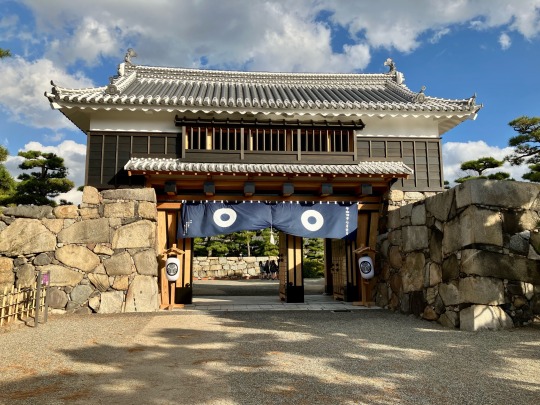
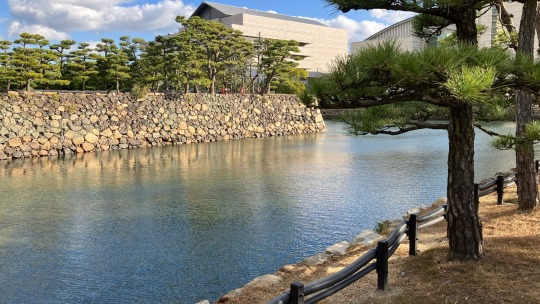
玉藻公園 (高松城跡) - Ruins of Takamatsu Castle and around Tamamo park
©️ matchart.tumblr.com
#castle ruins#original photogrpahy#pine trees#japan#kagawa#takamatsu#japanese garden#moat#玉藻公園#高松城#香川県#お堀#城跡#december#2022
5 notes
·
View notes
Text
shima’s development and character core // skip to loafer spoilers
if you’ve been following me, you know i like to pay a closer attention to shima’s growth and development, specially related to his relationship with mitsumi. that being said, i want to talk more about how much he changed after the breakup.
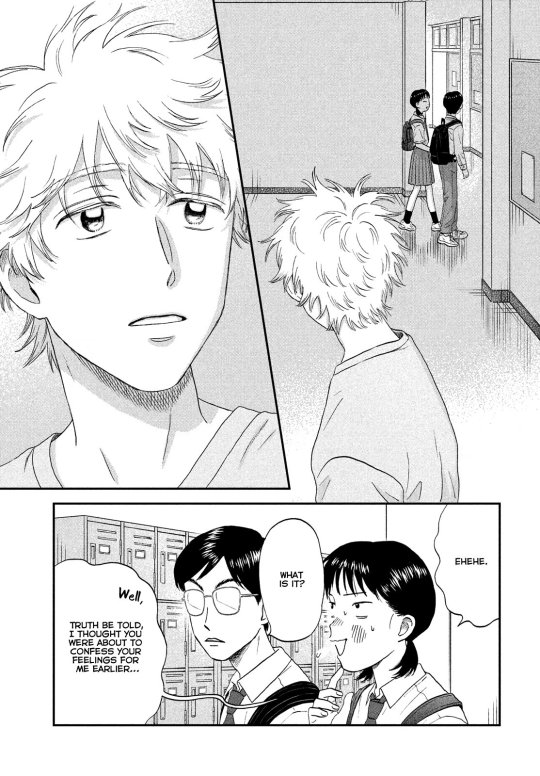

since chapter 46, i’ve seen a lot of changes in shima’s reaction, focusing way more on him double questioning himself and his feelings related to the way he treats mitsumi.
it’s painful. mitsumi was his first female friend and the first time he ever felt like taking a step further in his own, not accepting what it was given to him. and he lost that. and he thinks he lost it because of his own mind and insecurities, blaming himself for everything.

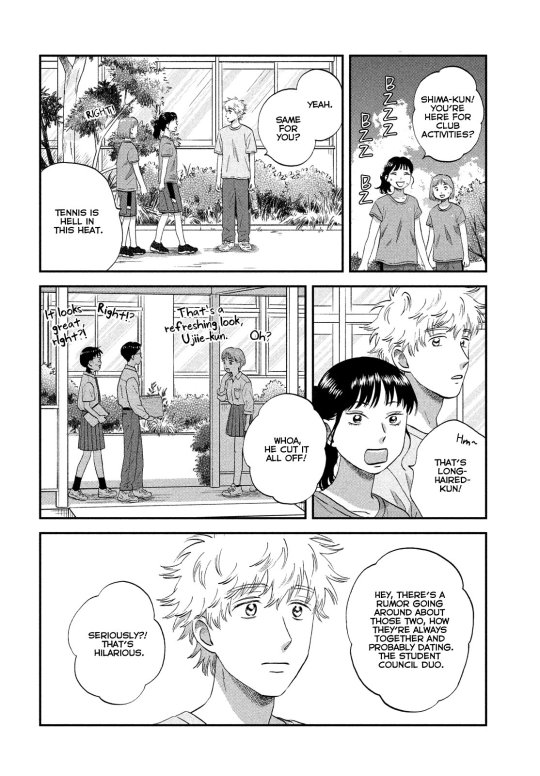
mitsumi, the person he loves the most (platonic or not), is distant from him. and this creates a whole new book of feelings: jealously, guilt, self hatred and impulsiveness. and that can be seen when he stands up for people he love, something he would once just not and smile.


but does he really has the right to do so?? is it honest for him to correct someone when he was the one who was once “using” with mitsumi without knowing his feelings first? is it fair for him to feel like this? is it fair that he be heard?
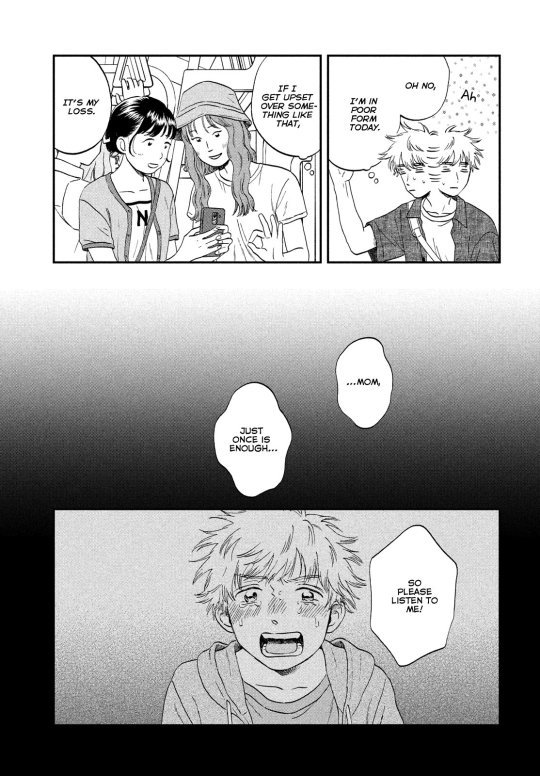

yes, he is hurt. it’s clear in his eyes, specially his last scene on chapter 50. he’s hurt but not by the things people did to him: he’s now the one who inflicted pain and doesn’t know how to get back what he lost. that’s because he doesn’t KNOW or even ALLOW himself to it.
what does it mean to love someone romantically when he never once felt jealous? what does it mean to care so much for someone when he was never cared to? what does it mean to give up of someone you love so dearly if he can’t even let it all go? how does one stop making excuses?


shima is a character written beautifully, specially because of his slowly but steady growth. he’s learning, finally having a life away from his trauma and away from people who chained him. he’s finally allowing himself to feel pain, now he needs to finally allow himself to be loved and to be heard. to build one’s confidence is hard and tricky, specially for a boy who never had a life of his own. to build a castle with only sand, one needs to be open to have it all crumble. he just needs to learn how to build it again.


what i love the most is how he never blamed mitsumi, not even once. i know there’s nothing to blame mitsumi for, but i’ve seen over and over again romantic stories blaming the girl for the male insecurities. but no. not right now.
his battle is his own, so his soldiers are the ones going to war, not mitsumi’s. he’s not the one to be pitied, nor is she, nor anyone. blame isn’t something to be shoved at someone, specially not to the girl who has nothing to do with HIS traumas.
i like and admire this about takamatsu-senpai’s writing. she doesn’t shift the blame or even makes shima the “good guy”. mitsumi isn’t a monster for standing up for herself - in fact, she should be celebrated.
shima is his traumas. shima is his mom’s expectations. shima is the empty house he comes back to everyday. shima is the boy who’s trying his best to finally understand his feelings and go after the girl he loves the most.

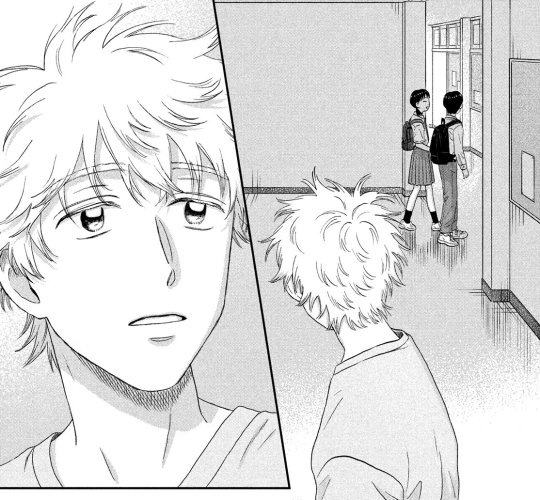
🌟 thread originally posted on twitter!
🌟 this is a flux of conscience! please forgive my gramatical mistakes
#sousuke shima#skip to loafer#skip and loafer#iwakura mitsumi#shima is an easy and hard character to analyze at the same time#he's my son so that's why I get him#i also love them so much#and I love shima a lot#please go easy on him#that's all I ask#duckmetas
587 notes
·
View notes
Photo

Hasui Kawase (川瀬巴水, 1883–1957)
「旅みやげ第二集」より『さぬきの高松城』
Takamatsu Castle in Sanuki (Sanuki no Takamatsu-jō), from the series Souvenirs of Travel II (Tabi miyage dai nishū)
1921
235 notes
·
View notes
Text

This beauty was seen in Takamatsu at the station by the castle.
9 notes
·
View notes
Text
youtube
Japan is a country with a rich cultural heritage, stunning natural landscapes, and a blend of modern and traditional elements. Whether you're interested in exploring historical temples, enjoying the beauty of cherry blossoms, or experiencing cutting-edge technology in bustling cities, Japan has something for everyone. Here's a guide to help you plan your visit to Japan:
1. Tokyo:
Asakusa: Visit Senso-ji Temple and Nakamise Shopping Street.
Shibuya Crossing: Experience the iconic pedestrian scramble.
Akihabara: Explore the electronics and anime district.
Tsukiji Outer Market: Try fresh sushi and seafood.
2. Kyoto:
Fushimi Inari Shrine: Walk through thousands of red torii gates.
Kinkaku-ji (Golden Pavilion): Admire the stunning Zen Buddhist temple.
Arashiyama: Explore the bamboo groves and visit the Iwatayama Monkey Park.
3. Osaka:
Osaka Castle: Visit this historic castle surrounded by a beautiful park.
Dotonbori: Experience vibrant nightlife and try local street food.
Universal Studios Japan: Enjoy the theme park attractions.
4. Hiroshima:
Peace Memorial Park: Reflect on the city's history and visit the Atomic Bomb Dome.
Miyajima Island: Explore the iconic "floating" torii gate at Itsukushima Shrine.
5. Nara:
Nara Park: Interact with friendly deer and visit Todai-ji Temple.
Kasuga Taisha Shrine: Explore the lantern-lined paths.
6. Hokkaido:
Sapporo: Enjoy winter sports, the Snow Festival, and delicious local cuisine.
Shikisai-no-Oka Flower Fields: Visit colorful flower fields in Biei.
7. Kanazawa:
Kenrokuen Garden: Experience one of Japan's three most beautiful landscape gardens.
Higashi Chaya District: Wander through well-preserved geisha districts.
8. Mount Fuji:
Chureito Pagoda: Capture stunning views of Mount Fuji.
Lake Kawaguchi: Enjoy the scenery around this picturesque lake.
9. Okinawa:
Shurijo Castle: Explore the reconstructed castle in Naha.
Okinawa Churaumi Aquarium: Visit one of the largest aquariums in the world.
10. Japanese Onsen (Hot Springs):
Experience the relaxation of traditional hot springs, such as those in Hakone or Beppu.
11. Japanese Gardens:
Visit traditional Japanese gardens like Ritsurin Koen in Takamatsu or Korakuen in Okayama.
12. Cherry Blossom Season:
Plan your visit during spring (late March to early April) to witness the breathtaking cherry blossoms.
13. Traditional Tea Ceremony:
Experience a traditional Japanese tea ceremony for a glimpse into Japanese culture.
14. Sumo Wrestling:
Attend a sumo wrestling match or visit a sumo training stable.
15. Japanese Cuisine:
Try sushi, ramen, tempura, kaiseki (multi-course meal), and other local specialties.
Tips:
Transportation: Utilize Japan's efficient and punctual public transportation, including the Shinkansen (bullet train).
Cash: While credit cards are accepted in urban areas, it's advisable to have some cash, especially in rural regions.
Language: English may not be widely spoken, so learning a few basic Japanese phrases can be helpful.
Japan offers a unique blend of tradition and innovation, and each region has its own distinct charm. Whether you're interested in history, nature, or modern city life, Japan provides a diverse range of experiences. Enjoy your travels in the Land of the Rising Sun!
#japan#japon#JapanTravel#ExploreJapan#JapanAdventures#VisitJapan#PhotographyJapan#JapanLovers#JapanVibes#JapanNature#JapanCulture#JapanExperience#JapanTrip#DiscoverJapan#JapanHoliday#JapanDreams#JapanWanderlust#JapanBeautiful#JapanViews#JapanLandscapes#JapanCityLife#JapanMemories#Youtube
3 notes
·
View notes
Text
2023 Reads!

Thank you to everyone for joining me on my book journey! I'm looking forward to another year of good reads! If you have any recommendations, please let me know.
Without further ado, here are my reads for this year!:

Howl's Moving Castle, Castle in the Air, and The House of Many Ways by Diana Wynne Jones
California Plants: A Guide to Our Iconic Flora by Matt Ritter
The Love Hypothesis by Ali Hazelwood
Look Alive Twenty-Five by Janet Evanovich
It Happened One Summer by Tessa Bailey
I Am a Cat Barista (Volume 1) by Hiro Maijima
Koe no Katachi/A Silent Voice (Volumes 2-6) by Yoshitoki Oima
Karakuri Odette (Volumes 1-5) by Julietta Suzuki
Komi-san wa Komyushou Desu/Komi Can't Communicate (Volumes 23-26) by Tomohito Oda
Cannery Row by John Steinbeck
Horimiya (Volume 1) by Hero
Wotakoi: Love is Hard for Otaku (Volume 5) by Fujita
Kakuriyo: Bed & Breakfast for Spirits (Volume 1) by Waco Ioka
Kiki's Delivery Service by Eiko Kadono
Skip & Loafer (Volumes 1-3) by Misaki Takamatsu
Skull-face Bookseller Honda-san (Volumes 2-4) by Honda
Toshokan no Daimajutsushi/Magus of the Library (Volumes 3-5) by Mitsu Izumi
Blasphemy: New and Selected Stories by Sherman Alexie
Strange Weather in Tokyo by Hiromi Kawakami
Saint Young Men Omnibus (Volume 1) by Hikaru Nakamura
The Wind-Up Bird Chronicle by Haruki Murakami
Insomniacs After School (Volume 1) by Makoto Ojiro
Kubo Won't Let Me Be Invisible (Volume 1) by Nene Yukimori
The Sixth Extinction by Elizabeth Kolbert
Twisted Love (Twisted #1) by Ana Huang
Wind/Pinball: Hear the Wind Sing and Pinball by Haruki Murakami
Under a White Sky: The Nature of the Future by Elizabeth Kolbert
Killing Floor (Jack Reacher #1) by Lee Child
Tim Burton's The Nightmare Before Christmas by Megan Shepherd
Muffin but the Truth (Bakeshop Mystery #16) & Catch Me If You Candy (Bakeshop Mystery #17) by Ellie Alexander
A Study in Scarlet, The Sign of Four, A Scandal in Bohemia, The Red-Headed League, A Case of Identity, The Boscombe Mystery, The Five Orange Pips, The Man with the Twisted Lip, The Adventure of the Blue Carbuncle, The Adventure of the Speckled Band, The Adventure of the Engineer's Thumb, The Adventure of the Noble Bachelor, The Adventure of the Beryl Coronet, The Adventure of the Copper Beeches, Silver Blaze, The Yellow Face, The Stock-Broker's Clerk, The Gloria Scott, The Musgrave Ritual, The Reigate Puzzle, The Crooked Man, The Resident Patient, The Greek Interpreter, The Naval Treaty, and The Final Adventure by Sir Arthur Conan Doyle
World War Z: An Oral History of the Zombie War by Max Brooks (audiobook)
Gokushufudō/The Way of the House Husband (Volumes 1-3) by Kousuke Oono
Grand total: 90
2 notes
·
View notes
Text
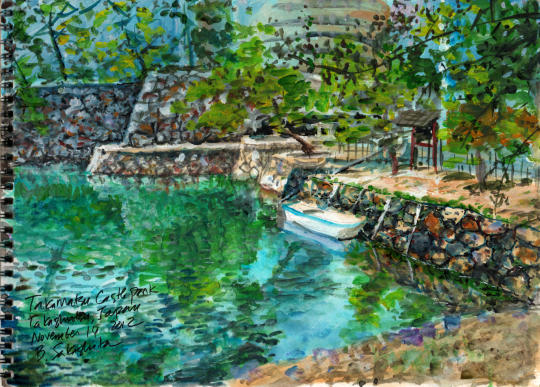
"Takamatsu Castle Park"
Takamatsu, Japan
November 14 2012
Gouache on 140 lb coldpress paper
9" x 12"
Sketched from a photo, about 2 hours
September 12 2023
#日本#japan#bandedessinée#comic#croquis#cityscapepainting#fumetti#citysketch#スケッチ#dessin#manga#urbansketchers#Tebeos#アート#イラスト#グラフィック#デザイン#マンガ#만화#urbansketching#takamatsu#takamatsucastle#高松城#高松#gouacheillustration#gouacheart
2 notes
·
View notes
Photo
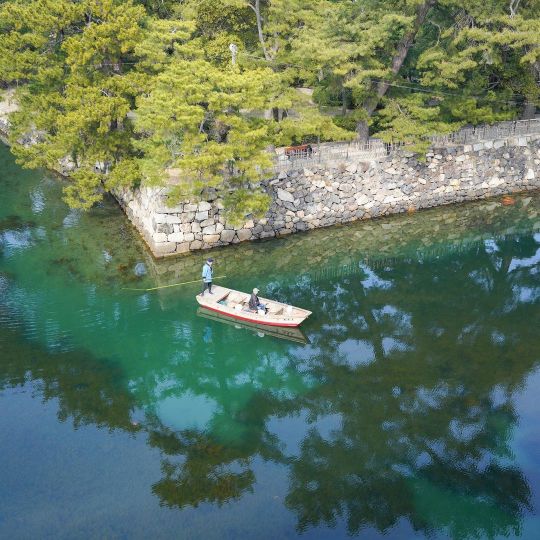
日本三大水城 Japan's first and Japan's three largest water castles 愛媛県の伊予今治城、大分県の豊前中津城と並んで、日本三大水城のひとつ、香川県の讃岐高松城。お堀に海水を引き込んでいるため、鯛が泳いでいます。 Along with Imabari Castle in Ehime Prefecture and Nakatsu Castle in Oita Prefecture, Takamatsu Castle in Kagawa Prefecture is one of the three largest water castles in Japan. Sea water is drawn into the moat, so sea bream swim in it. After Toyotomi Hideyoshi's conquest of Shikoku, Ikoma Chikamasa built this castle by the sea in Takamatsu, which was a strategic point on the Seto Inland Sea route. The remains that can be seen today were later renovated by Matsudaira Yorishige, who came to Takamatsu in the early Edo period. (史跡 高松城跡 玉藻公園) https://www.instagram.com/p/Cm0Fph3vzUN/?igshid=NGJjMDIxMWI=
5 notes
·
View notes
Text
Kafka on the Shore
I have read Norwegian Wood, Wind Up Bird Chronicle, Killing Commandatore and Kafka on the Shore shares some similar themes to his other works. Kafka on the Shore was written by Haruki Murakami in 2005. The characters mentioned are Crow, the protagonist named Kafka Tamura, Sakura, Oshima, Nakata, Hoshino, and Miss Saeki. An important part of the story already is “Sometimes fate is like a small sandstorm that keeps changing directions. You change direction but the sandstorm chases you. You turn again, but the storm adjusts. Over and over you play this out like some ominous dance with death just before dawn. Why? Because this storm isn’t something that blew in from far away, something that has nothing to do with you. The storm is you. Something inside of you. So all you can do is give in to it, step right inside the storm, closing your eyes and plugging up your ears so the sand doesn’t get in and walk through it step by step. There’s no sun there, no moon, no direction, no sense of time. Just fine white sand swirling up into the sky like pulverized bones. That’s the kind of sandstorm you need to imagine.” (5) The setting is described as being Shikoku, Takamatsu, Tokyo, and Osaka. The story is about a journey of self discovery and meaning. A quest to find one’s purpose.
In other Murakami books like the Wind up Bird Chronicle and Killing Commendatore, war is discussed like the Sino Japanese war between Japan and China and the Manchurian war. In this story it discusses airplanes dropping bombs in the 1940’s during World War II. Gas was being sprayed to children. The Japanese citizens detested the American soldiers for doing it. Tankas and haikus are discussed because the protagonist Kafka goes into a university and discovers them. The Edo and Meji periods are mentioned. The Edo period lasted from 1603-1867. The Meiji period is from 1868-1912. The Taisho to the early Showa period is discussed too.
There is a philosophical section of the story with a talking cat and an older man. I think they have passed on and are figurative symbols of holiness.
Franz Kafka stories are mentioned like “The Castle”, “The Trial” , ”The Metamorphosis” so I have to see where that leads. Franz Kafka was a postmodernist writer that grew up in Prague Czech Republic.
A teenager is running away from everything that is familiar to him like his father and town and creating a new life for himself in a new town. I think this will be a coming of age novel and self discovery. I enjoy the part of the story with the talking cats. It reminds me of Winnie the Pooh in the magical sense with talking animals. The title Kafka on the shore could be about rebirth and creating a different identity for yourself completely. Starting anew from what you knew. I haven’t read Franz Kafka books so I am not familiar with them. In the story, it talks about killing cats and cutting their heads off. It’s graphic in that way. The character goes to university and learns everything he thought he knew over again. Nothing he knew was right. A passage from the story that I found to be interesting is “A dark, ominous pool of water. It was probably always there, hidden away somewhere. But when the time comes it silently rushes out, chilling every cell in your body. You drown in that cruel flood gasping for breath. You cling to a vent near the ceiling struggling but the air you manage to breathe is dry and burns your throat. Water and thirst cold and heat those supposedly opposite elements combine to assault you. The world is is a huge space but the space that will take you in and it doesn’t have to be very big is nowhere to be found. You seek a voice but what do you get? Silence. You look for silence but guess what? All you hear over and over is the voice of this omen. And sometimes this prophetic voice pushes a secret switch hidden deep inside your brain. Your heart is like a great river after a long spell of rain spilling over its banks. All signposts that once stood on the ground are gone inundated and carried away by that rush of water. And still the rain beats down on the surface of the river. Every time you see a flood like that on the news you tell yourself that’s it. That’s my heart.” (10-11) It is a beautiful passage because to me it could be referencing the flood that ‘God’ brought to earth and people have to deal with it in their own way. The flood is good because it adds new life to things and replenishes figurative and literal “dryness. The passage speaks to the truth in ways because there is a” flood” of everything sometimes and it takes the strong to feel good when one is overwhelmed with things.«1912-1926 was the Taisho period under the emperor Taisho. 1868-1912 was the Meiji period. 1926-1989 is the Showa period. From what I interpret the story to be so far is to be completely letting go of things you know and being open minded to learning things you have never known before and being vulnerable. Being born again and starting afresh in a new universe where everything is a possibility figuratively speaking. Seeing things from a new perspective and new world viewpoint. One book that I know Franz Kafka writes is the metamorphosis about how a person changes and metamorphosizes into a cockroach because he may have “sinned” and that was is fate. After he completes his life as a human, he got reincarnated into a cockroach because he wasn’t a good human being and that was his fate in the next life if one believes in that. I think the story is set in the present day but it references the past with World War Two references. I think reincarnation is a theme in the story because the talking cats could be representative of people’s spirits. It’s a story about a journey. They travel far across highways in Japan to where they need to end up. Leeches are described as falling from the sky in a surreal manner. Fate is a theme. Murakami mentions Oedipus. He mentions Greek mythology in his writing. Kafka on the shore is a song name and the lyrics are “You sit at the edge of the world ,I am in a crater that’s no more. Words without letters Standing in the shadow of the door The moon shines down on a sleeping lizard Little fish rain down from the sky. Outside the window there are soldiers, steeling themselves to die. Kafka sits in a chair by the shore Thinking of the pendulum that moves the world it seems.
3 notes
·
View notes
Text
20 Must See Destinations in Japan:
1. **Tokyo:**
Japan's bustling capital offers a blend of modern and traditional attractions. Visit the historic Asakusa district, explore the trendy Shibuya crossing, and marvel at the cityscape from the Tokyo Skytree.
2. **Kyoto:**
Known for its stunning temples, gardens, and traditional tea houses, Kyoto is a UNESCO World Heritage site. Don't miss the iconic Fushimi Inari Shrine and the serene Arashiyama Bamboo Grove.
3. **Osaka:**
A food lover's paradise, Osaka is famed for its street food and vibrant culinary scene. Visit Osaka Castle, Universal Studios Japan, and the lively Dotonbori district.
4. **Hiroshima:**
Explore the Peace Memorial Park and Atomic Bomb Dome, commemorating the tragic events of 1945. Miyajima Island, with its "floating" torii gate, is a short ferry ride away.
5. **Nara:**
Encounter friendly deer roaming freely in Nara Park, home to historic temples like Todai-ji, housing a colossal Buddha statue.
6. **Hokkaido:**
Japan's northernmost island offers breathtaking landscapes, including hot springs in Noboribetsu, skiing in Niseko, and the stunning Shikisai-no-Oka flower fields.
7. **Hakone:**
Famous for its hot springs and views of Mt. Fuji, Hakone is a popular getaway from Tokyo. Enjoy a relaxing soak in an onsen and cruise on Lake Ashi.
8. **Nikko:**
Discover elaborate shrines and beautiful natural scenery in Nikko, including Toshogu Shrine and the picturesque Kegon Falls.
9. **Kanazawa:**
Immerse yourself in traditional Japanese culture in Kanazawa's well-preserved geisha districts, Kenrokuen Garden, and the Nagamachi samurai district.
10. **Takayama:**
Experience rural Japan in Takayama, known for its well-preserved Edo-period streets, traditional houses, and the biannual Takayama Festival.
11. **Koya-san:**
A spiritual retreat, Mount Koya is home to numerous Buddhist temples, offering visitors a chance to stay in a shukubo (temple lodging) and experience a monk's way of life.
12. **Okinawa Islands:**
Explore Okinawa's unique culture, beautiful beaches, and historical sites. The Okinawa Churaumi Aquarium is a must-visit, showcasing marine life from the Kuroshio Sea.
13. **Yakushima:**
A UNESCO World Heritage site, Yakushima is renowned for its ancient cedar forests and beautiful hiking trails, including the mystical Shiratani Unsuikyo Ravine.
14. **Ise-Shima:**
Visit Ise Grand Shrine, one of Japan's most sacred Shinto shrines. Explore the scenic coastline, and don't miss the famous ama divers in Toba.
15. **Matsumoto:**
Admire the iconic Matsumoto Castle and explore the historic Nakamachi district. Matsumoto is a gateway to the Japanese Alps and the Kamikochi National Park.
16. **Kagoshima:**
Experience the volcanic landscapes and hot springs of Kagoshima, with a stunning view of Sakurajima volcano. Sengan-en Garden and Chiran Samurai Residences offer glimpses of history.
17. **Naoshima:**
A haven for contemporary art lovers, Naoshima Island is dotted with unique art installations and museums, including the Chichu Art Museum and the Benesse House.
18. **Beppu:**
Famous for its numerous hot springs, Beppu offers a relaxing onsen experience. Explore the "Hells of Beppu," a collection of vibrant and unique hot springs.
19. **Shikoku Island:**
Discover the tranquil beauty of Shikoku, known for the Shikoku Pilgrimage, Ritsurin Garden in Takamatsu, and the Naruto Whirlpools in Tokushima.
20. **Shirakawa-go:**
Experience traditional gassho-zukuri farmhouses in the UNESCO-listed village of Shirakawa-go. Visit during winter to see these thatched-roof houses covered in snow, creating a magical scene.
These destinations showcase the rich cultural heritage, natural beauty, and diverse experiences that Japan has to offer. Each location provides a unique perspective on the country's history, traditions, and modern achievements.

0 notes
Text

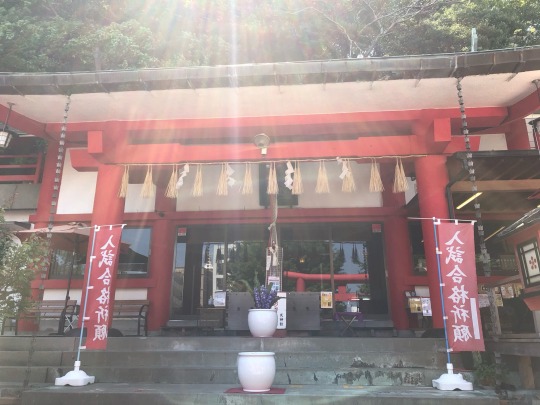

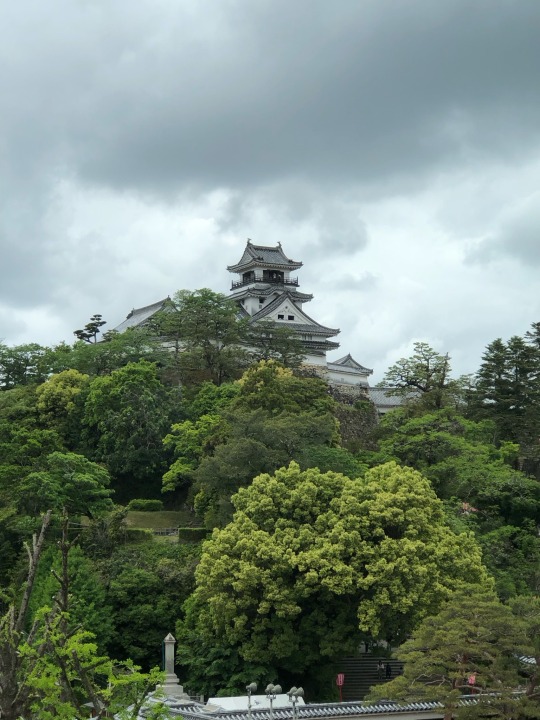
golden week: shikoku
april 30-may 7, 2023
>> see all golden week 2023 posts <<
for golden week this year i decided to visit the four prefectures on the island of shikoku!
you can get to shikoku by ferry, plane, or train. i choose train, so i came in through okayama on a bridge over the seto inland sea, which was really cool!
for most people, including me, takamatsu city in kagawa prefecture is the gateway to shikoku. i spent the first several days of my golden week there. the first day was a travel day, but the second day i spent exploring takamatsu. i visited ritsurin garden, which is one of japan's most beautiful gardens (though not the top three). it was a really nice garden with a clearly laid out walking path throughout. i also gathered up my courage and went up to the observatory in symbol tower, which offers views of takamatsu city and the seto inland sea from the 29th floor. finally, i visited a shrine deep into the city to get my kagawa goshuin.
the following day i had a day trip to tokushima. i originally was going to visit the naruto whirlpool, but they only appear during high/low tide so timing the visit can be difficult. ultimately i decided to visit tokushima city instead, and went to the awaodori museum and the nearby shrine. when i came back i tried sanuki udon, which was pretty good!
after that was a travel day to kochi city. perhaps one of my favorite days, the views from the train through central shikoku were immaculate! we went through the iya valley, and i got to see oboke gorge from the train window.
kochi city was really fun. it's the type of city that really lets its hair down at night. i visited the castle museum, the castle grounds, a shrine, and the shopping streets in downtown kochi. there's something really nice about a pacific city with tall palm trees and a relaxed nightlife!
the day after was another travel day, going back up through central shikoku and then over to matsuyama city in ehime. unfortunately the bad weather was rolling in, so that same day i made a quick visit to dogo onsen and the surrounding area, which is a really cool area. there's a cute animated clock that plays music through the day, and there's a shopping street with lots of souvenir opportunities. dogo onsen is currently being renovated but even so, you can still see the front!
on may 6, the last full day, it did heavy-rain. however, before it started i was able to visit a shrine in ehime and get a new goshuin book because i filled up the old one! my hotel was near okaidou shopping street which was convenient for the rainy day situation, since it's covered.
and may 7th i went home from ehime via okayama! i had originally planned to go on the jet ferry, but with the weather being terrible for two straight days i decided it's safer to take the train.
to sum it all up, shikoku is known as this backwater country sort of place, and in some ways it is. it's not very accessible for wheelchair users, and most places required paper tickets and could not accept ic cards for trains, BUT everyone i met was super kind and wanted to chat (shoutout to the man at the shrine who let me take cute pictures of my new goshuin), and shikoku just has a vibe about it that's very cool and fun. i would love to go back next time i'm in japan.
0 notes
Text
Sakura Gomon Regeneration" at Takamatsu Castle Ruins in Kagawa Prefecture: Projection Mapping Adds Color to a "Phantom National Treasure" Restored Over 77 Years
Sakura Gomon Regeneration” at Takamatsu Castle Ruins in Kagawa Prefecture: Projection Mapping Adds Color to a “Phantom National Treasure” Restored Over 77 Years
JTB, Lanhansha, and IMOS will hold “Sakuragomon Regeneration,” a nighttime projection mapping event from November 3 to 6, 2012, at the Sakuragomon Gate in Tamamo Park (2-1 Tamamo-cho, Takamatsu City, Kagawa Prefecture), a historic site of Takamatsu Castle.
In July 2022, the gate was restored and is now open to the public for the first time in 77 years.
In “Sakuragomon Regeneration,” “Sakuragomon”…
View On WordPress
0 notes
Link

Chapter 60: Slow, Love, Slow
Vee goes sightseeing, whether she wants to or not.
Even Goro’s patience wears out at some point, which she can’t blame him for.
“I am taking you to Takamatsu,” he informs her, the tone of his voice allowing no discussion. “We will go sightseeing there.”
“Sure,” she relents after a look at his face: he’s cooped up with her, and by now he’s exhibiting symptoms of cabin fever. “What sight’s there to see anyway?”
“We could head to Shikoku Mura,” he suggests, getting up and straightening his already immaculate suit. “It is a… museum village? Yes, I think that is the word.”
His outfit tells her he’d meant to go out today: where other people stay in their PJs, Goro has a comfy indoors kimono that he doesn’t sleep in. Vee, by contrast, has a set of indoor silks that regularly end up on the bedroom floor. Not that she’s complaining; the thing comes off easily and is smoking hot. The kimono, that is.
“The houses there are over a hundred and fifty years old, many of them even older.”
Well, so is Saburo, and he’s not much to look at.
read on
Chapter 61: Winning from the outset
Walking with his thief in the gardens of Tamamo: Not as Goro thought it would be.
“Think you can make that jump?” his irreverent gaijin wife dares him, walking towards the pavillon where the moat is narrowest.
Following her, Goro is already calculating: perhaps four ken in distance and three more in height…?
“Easily,” he replies, “even carrying you. This parking lot has all but ruined the sea as a northern defence.”
“Rude.” She laughs, studying the castle’s wall. Cautiously, she keeps well away from the water, only relaxing once he stops next to her. “Guess they didn’t plan for city planning, yeah?”
read on
Chapter 62: Just Give Me A Reason
Sometimes, all it takes is a change of perspective. That is, Vee just needs to pull her head out of her ass.
“This gig is literally a walk in the park,” Johnny heckles. “Get a grip on yourself, baby bitch.”
Breathing into her stomach, she smiles at her samurai, whom she loves. He’s standing close to her, brown eyes warm with affection, his smile wiped away by concern once again.
And he’s brought her back from the dead, didn’t he? She’s crossed the Blackwall and lives, crossed the.…whatever they put between life and death, but it sure is a wall, too — so she could come back to be with him, she can put up with a bird-infested castle garden.
Glass.
read on
Chapter 63: Sea Bream
Another thing does not go like expected, and it hits Goro's thief like a thunderclap out of a blue sky.
Even with the road and quay, the castle still maintains a pleasant breeze from the sea. Even in the worst heat of summer, this garden, the glade behind them, will be a shelter from the oppressive heat. Right now, in spring, the shadows are almost chilly.
In the sunlight, he walks next to his young thief across the open space in front of Hiunkaku and enjoys her curiosity. Still wary, she is nonetheless paying more attention to the offered goods than the tourists.
read on
Chapter 64: Raining
Between her imaginary friend and her samurai, there's no reason to mope, not even this one.
Coming back from the dead changes you, and like a gunshot victim, you’re completely dependent on the person who picks you up. Vee is lucky — she ended up with the sweetest, most patient samurai in the world.
Johnny wasn’t so lucky. He all but fell to the scavs—
“Hey, that’s a bit steep, even for you,” he drawls. “Never even tried to get a piece of Silverhand, corpo bitch.”
read on
#Cyberpunk 2077#cp2077#fanfiction#V/Takemura#Goro Takemura#Vee#Imaginary Johnny Silverhand#Takamatsu castle#Tamamo Park#Happy end is happening#A dream of Night City; a dream of Ōsaka#Epilogue#fluff#smut#humour#humor#Japan and Cyberpunk#mana writes#field trip
3 notes
·
View notes
Video
高松城 by blackyuuki
#Japan#travel#traveling#reisen#reise#旅行#日本#KuroyukiInJapan#takamatsu#shikoku#四国#高松#香川県#kagawa#Takamatsu castle#高松城#fall#autumn#秋
126 notes
·
View notes